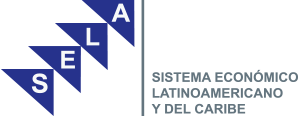DESPITE DECELERATION OF GLOBAL GROWTH, SOUTH-SOUTH TRADE REMAINS A STRATEGIC OPTION
09 octubre 2013
Fuente: Taken from IDB Website
Fuente: Taken from IDB Website
Washington, October 9- In recent decades the developing countries of the South have grown at a faster pace than those of the North, changing the pattern of global growth. For countries in Latin American and the Caribbean (LAC), this has translated into relatively lower demand in traditional export destinations, and an unprecedented opportunity to break into new markets and expand trade with emerging economies.
These long-term trends and their impact on the region are documented and analyzed by the IDB in the Trade and Integration Monitor 2013, an annual series of reports that study the evolution of LAC integration in the global trading system, based on data available in INTrade, the IDB’s information system on trade and integration. The report includes detailed indicators of recent trade performance for the 26 borrowing members of the IDB, profiles of free trade agreements in force in the region, and a statistical annex with data for each country.
The report projects that exports from developing countries will exceed 50 percent of global trade within a few years. Furthermore, South-South trade has grown more rapidly than total trade, and already exceeds South-North exports. This has been the case for LAC, where nearly all countries of the region have seen their exports to the South grow faster than to the North, and have a more diverse composition and a greater share of manufactures.
However, the report notes that trade costs are significantly higher for South countries. Although tariffs have fallen thanks to Free Trade Agreements, non-tariff barriers implemented by South countries have prevented full realization of their benefits. At the same time, credit bottlenecks have been an impediment limiting opportunities for the private sector in South-South trade.
Although the current economic outlook points to downside risks in emerging markets, it is unlikely that the long-term trend of strengthening South-South trade will be fully reversed. The report provides important data to help LAC take advantage of trade opportunities with the South as a strategic option for export diversification.








